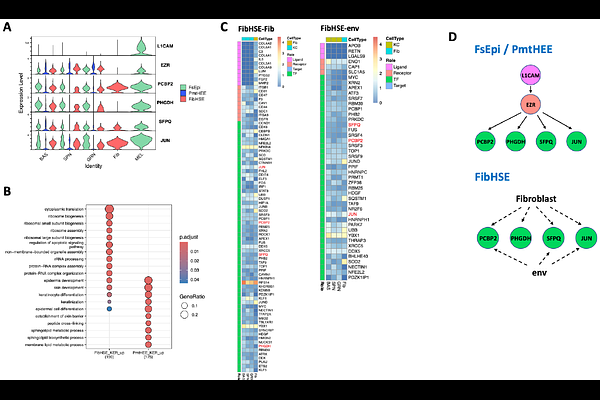Enhanced Differentiation Potential of Pigmented Human Epidermal Equivalents

Enhanced Differentiation Potential of Pigmented Human Epidermal Equivalents
Jia, Y. Y.; Bajsert, J.; Perez-Aso, M.; Atwood, S.
AbstractMelanocyte-keratinocyte interactions are vital for regulating melanogenesis and maintaining epidermal homeostasis. However, most 3D human skin equivalents lack melanocytes, limiting their relevance for pigmentation studies. To address this, we utilized a pigmented human epidermal equivalent (PmtHEE) that incorporates melanocytes into the epidermis. Using single-cell RNA sequencing (scRNA-seq), we characterized PmtHEE and compared it with neonatal foreskin epidermis (FsEpi) and a fibroblast-containing human skin equivalent model (FibHSE). PmtHEE showed a higher proportion of differentiated cells and model-specific cell state transition paths that reflect in vivo trajectories. We further uncovered a shared L1CAM-EZR-driven external signaling network using exSigNet in FsEpi and PmtHEE that mediates melanocyte-to-keratinocyte communication and supports epidermal differentiation. Altogether, PmtHEE provides a distinct and physiologically relevant model of pigmented skin, with enhanced differentiation potential compared to conventional in vitro systems.